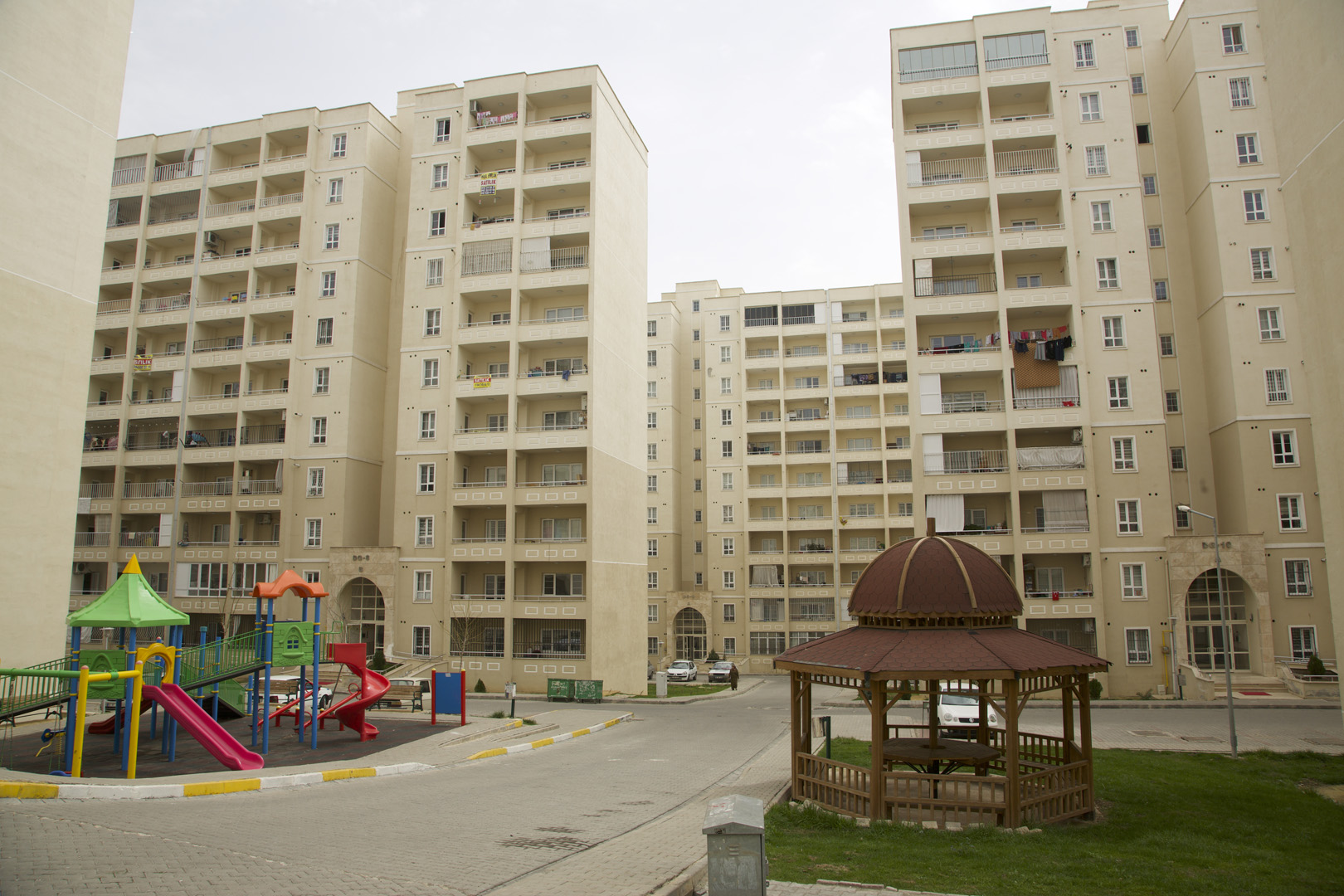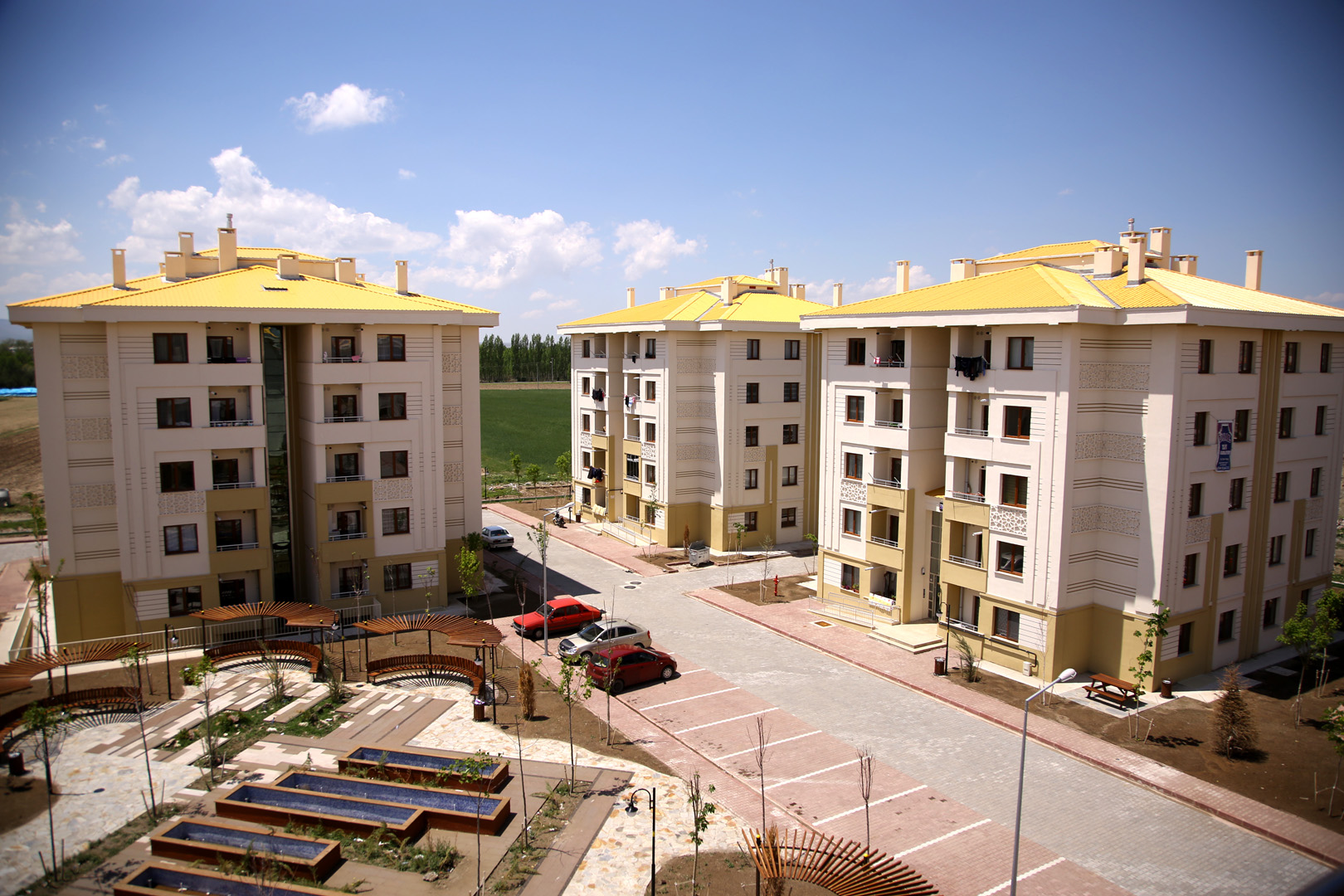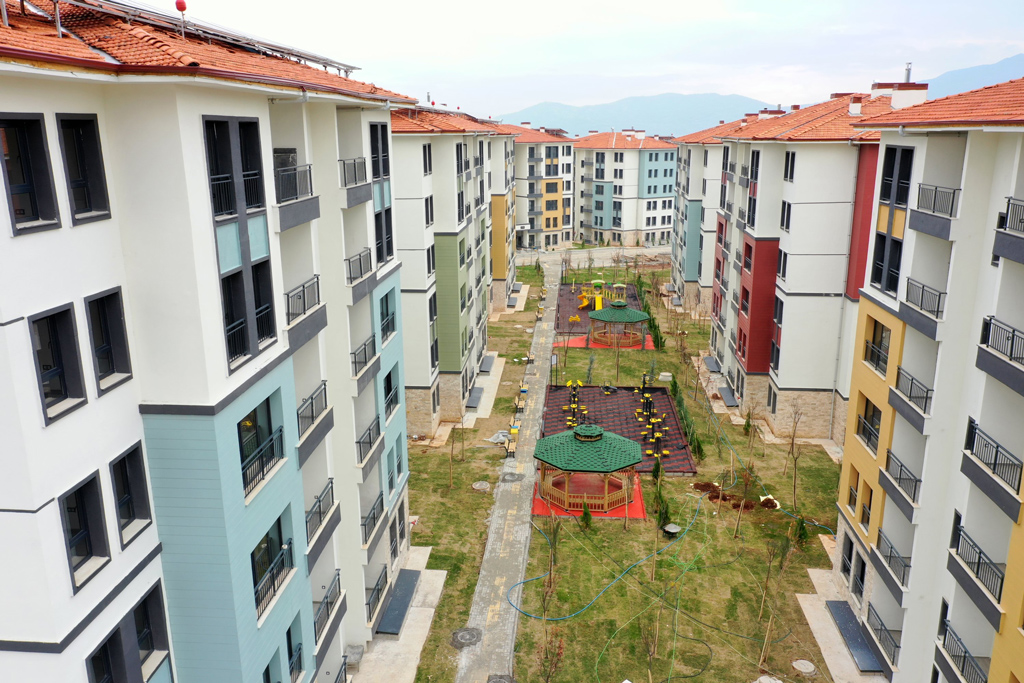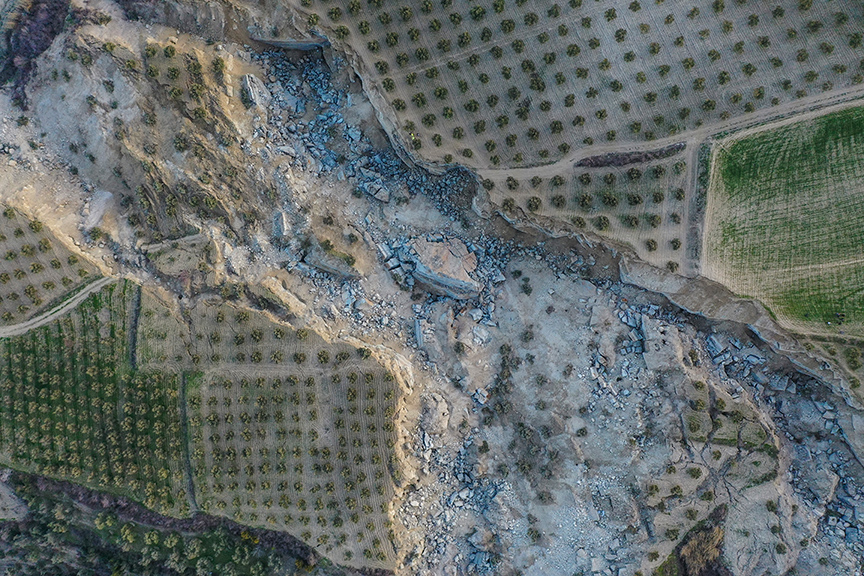Earthquakes have an extremely devastating impact on urban communities and socio-economic assets. Dubbed the “disaster of the century,” the Kahramanmaraş earthquakes rocked Türkiye and its southern neighbor, Syria. They took a heavy toll on 11 Turkish provinces with rich histories, culture, and many tourist attractions, in a region that supports agricultural and industrial production and is home to some of the best examples of our ancient tradition of urban life. Unfortunately, this disaster directly impacted approximately 14 million people in the provinces of Hatay, Kahramanmaraş, Adıyaman, Gaziantep, Malatya, Osmaniye, Kilis, Adana, Diyarbakır, Şanlıurfa and Elazığ. More than 100,000 people survived the earthquakes with injuries, whereas over 45,000 individuals lost their lives in the country. The tremors damaged industrial sites, historical and natural treasures, rural settlements, and irrigation systems as well as communication, transportation and logistical infrastructure, and education, medical, religious and social centers.
Standing with the Turkish People in the Earthquake’s Immediate Aftermath
The disaster, which saw a series of independent earthquakes and many aftershocks within a short amount of time, is clearly different from past disasters in terms of its impact and its destructiveness. What remains the same, however, is our responsibility to Türkiye’s citizens. Regardless of the circumstances, we have been with our citizens since the earthquake’s immediate aftermath to conduct search and rescue missions and heal the affected communities’ wounds – as always. We mobilized all of the Turkish state’s means, experience, and capabilities for the people, ensuring that all public institutions worked hand in hand with the nation. Since the tremors impacted a total of 11 provinces, we have been working simultaneously in a very large part of the country. To date, the Disaster and Emergency Management Authority (AFAD), gendarmerie search and rescue teams, nongovernmental organizations (NGOs), the National Medical Rescue Team (UMKE), the Turkish Red Crescent, emergency medical services, and law enforcement agencies have conducted rescue missions and delivered first aid supplies, clothing items, housing solutions, tents and food to the survivors with approximately 35,000 staff, and 2,101 vehicles.
A Scientific Approach to New Urbanization Efforts
We are carrying out urban projects in the affected area with a new method that maximizes urban and public safety. In this regard, we have launched a comprehensive effort. We are working with experts and scientists to monitor and manage the post-disaster situation with an eye on the environment, urbanization, and climate change and to make policy choices to shape the improvement and rebuilding process.
We will carry out urban development projects with scientists and by taking into consideration all factors from architecture, construction technologies, and smart city applications to preserving traditional architecture, building earthquake- and disaster-resilient communities, culture, and everything related to cities. Starting with the earthquake-stricken area, we will take more active steps to improve and rebuild the entire country with a sense of mobilization and in line with the conditions that the geography dictates.
We will build disaster-resilient and smart cities that are aligned with our nation’s centuries-old urban traditions and architectural values and based on new blueprints that reflect the principles of horizontal architecture. In the wake of the latest disaster, we will take all steps regarding urban planning by considering our citizens’ current and future needs. We will improve and rebuild towns with a holistic approach that unites them with their surroundings and the environment. As part of that process, we shall also take steps toward the green transformation of our cities to make them more eco-friendly.
Effective Damage Assessment
In addition to taking those steps, we have been identifying structural issues in collapsed or heavily damaged buildings and assessing undamaged buildings from the perspective of resilience since the damage assessment process began. In this regard
, we deployed 7,350 specialists to inspect 1,346,683 buildings with 4,443,085 independent units across the 11 affected provinces. Moreover, we identified 185,345 collapsed or heavily damaged buildings containing 553,415 independent units. In addition to assessing the damage, we are simultaneously analyzing all collapsed buildings by paying special attention to structural flaws, building materials and technology.
Eco-Friendly and Safe Rubble Management
Another important issue that deserves attention is post-earthquake rubble management. We have planned a rubble removal and management process that actively takes into consideration safety, the public’s health, and the environment. In this regard, the ministry is coordinating the collection of all rubble in designated areas in all affected cities for safe disposal and recycling. The removed materials are divided and sorted. That process, too, is completed by keeping the environment and safety in mind. Upon completion, we will ship all hazardous and recyclable items to waste management facilities.
Following the sorting process, recyclable waste (like concrete and bricks) will be used in pavements and pedestrian zones or as filling materials.
Temporary Shelter
Until the completion of permanent housing units after earthquakes and other disasters, it is necessary to address the population’s need for shelter through various methods, including tents, container homes, and temporary hosts. In cooperation with the AFAD and the Turkish Red Crescent, we have built temporary housing areas, consisting of tents and container homes, in various districts and villages in all 11 provinces. We continue to take necessary steps on that front.
Core Principles of Rebuilding
We are working with academics, experts, and scientists to identify the basic principles and the kind of technology needed for post-disaster rebuilding. Furthermore, we continue to develop new models to improve smart buildings and urbanization methods to ensure that pre-earthquake preparation and post-earthquake search and rescue operations take place swiftly and effectively.
As part of our new urbanization activities, we take into account the likelihood of earthquakes, the history of earthquakes, and the state of physical structures in a given area. By taking those steps,
we carefully assess whether damaged residential areas are suitable for rebuilding. In this regard, we conduct geological, geodesic, and geomorphological studies to establish which areas are suitable for habitation as part of our new urbanization projects. As such, we study the soil across the region to measure its resilience to earthquakes using a method called micro-segmentation.
Within the context of urbanization projects in the disaster zone, we have taken steps to create plans for cities and rural areas, as well as to develop disaster-sensitive approaches to planning and making plans to ensure resilience and safety in the face of earthquakes and other disasters. During the process of post-disaster reurbanization, we attach great importance to developing disaster-resilient designs that are in sync with local patterns and future approaches to urbanization. We also oversee the restoration of historical and cultural artifacts that were destroyed or damaged during the disaster.
To rebuild all 11 disaster-hit provinces, we will actively incorporate climate-friendly policies and practices in new urbanization projects with an eye on Türkiye’s revolutionary green development goals. With regard to devastated communities in the earthquake zone, we are developing new strategies to adapt urban renewal projects to each city’s unique texture and identify methods for the development of urban renewal strategies. Considering that another earthquake may occur in the same region, we are taking steps to ensure that all new buildings comply with the smart and safe city concept and technical infrastructure designed to prevent casualties and material loss.
We also make an effort to enable smart building systems to function as an early warning system with the help of affective technology and to integrate building identification systems, infrastructure, transporation, energy, zero waste, and all other facilities into smart city applications. By taking those measures, we strive to build disaster-resilient communities and facilitate the post-disaster management process.
Socioeconomic Considerations
We attach great importance to determining the disaster’s socioeconomic damage, in addition to the structural destruction it caused in our cities, and analyzing each region’s unique sociocultural pattern to contribute to post-disaster recovery. In this regard, we take the necessary precautions relating to social factors to prevent urbanization that could lead to societal division – especially on the basis of income distribution. We conduct post-earthquake urbanization activities in a way that will boost the sociological and psychological resilience of communities. Our new urbanization projects are designed to heal social faultlines in the disaster zone through horizontal architecture – an ancient style that promotes unity, fraternity, and good neighborly relations.
[caption id="attachment_18019" align="aligncenter" width="1920"]

Buildings built by TOKİ in the city of Diyarbakır.[/caption]
Earthquake Homes
Per our esteemed president’s public statements and instructions, we continue to develop projects for new housing units.
Within the next two months, we will start building 200,000 residential units, including 2,500 apartments in Adana, 29,622 apartments in Adıyaman, 6,000 apartments in Diyarbakır, 18,544 apartments in Gaziantep, 55,822 apartments in Hatay, 52,417 apartments in Kahramanmaraş, 1,395 apartments in Kilis, 53,050 apartments in Malatya, 9,550 apartments in Osmaniye, 3,000 apartments in Şanlıurfa and 2,000 apartments in Elazığ. That number will increase, if necessary, once the damage assessment is completed. We will deliver homes to all citizens entitled to new residences within one year – as we did in Van, Elazığ, Malatya, Izmir, Giresun, and Kastamonu.
We will also carry out similar activities (as in the aftermath of previous disasters) in villages. We have launched an effort to find suitable locations for permanent housing units and will kick off construction within the next month. Initially, we will build the following within one year: 1,800 apartments and 293 village homes in Adana, 43,400 apartments and 11,400 village homes in Adıyaman, 6,000 apartments and 634 village homes in Diyarbakır, 4,500 apartments and 588 village homes in Elazığ, 30,150 apartments and 8,162 village homes in Gaziantep, 139,650 apartments and 15,224 village homes in Hatay, 83,000 apartments and 18,681 village homes in Kahramanmaraş, 1,250 apartments and 1,681 village homes in Kilis, 62,000 apartments and 16,714 village homes in Malatya, 11,600 apartments and 1,598 village homes in Osmaniye, and 3,000 apartments and 700 village homes in Şanlıurfa. Accordingly, we will have built 386,350 apartments and 75,681 village homes within one year. All village homes will have barns and yards, with each neighborhood also featuring parks and other social facilities. The new structures will be integrated with the local architectural style. We may also increase that number depending on the damage assessment.
[caption id="attachment_18020" align="aligncenter" width="1620"]

Buildings built by TOKİ in the city of Şanlıurfa.[/caption]
In addition to 234,000 disaster units, we will deliver 75,000 village homes to affected communities – a total of 309,000 healthy and safe residences. We plan to build homes within one year – just as we did after disasters in Kastamonu, Antalya, and Muğla. Unfortunately, we established that the vast majority of collapsed buildings were built before 1999. That is why we continue our efforts with the maxim that “unfit buildings, not earthquakes, threaten human life.”
We have treated urban renewal, an effort that was launched in 2012 under President Recep Tayyip Erdoğan’s leadership, as a question of future survival and consider it above politics. We have been taking steps toward earthquake-related renewal across the country. To date, we have rebuilt 3.3 million apartments as part of urban renewal efforts for Türkiye and our cities. We made significant progress toward increasing the share of disaster-resilient buildings through our building audit system. Thanks to the public and private urban renewal initiatives, Housing Development Administration (TOKİ) apartments, and the building audit system, we have ensured the safety of 65 percent of all buildings. In doing so, we ensured the safety of more than 55 million lives – more than half of the country’s population. That none of TOKİ’s buildings in the earthquake-stricken area collapsed is proof that urban renewal efforts and social housing projects have been successful. We will continue those efforts by taking decisive steps.
Together, we will heal all wounds. We will make our cities safe for children, young people, senior citizens, and mothers once again.
We will implement all principles of modern urbanization in resilient, smart, and climate-friendly cities. The survivors have lost their relatives and loved ones. They suffer a great deal and we suffer with them. We will heal their wounds. We will build new homes for them as quickly as possible to alleviate their pain to some extent.
Murat Kurum, Minister of Environment, Urbanization and Climate Change
 Buildings built by TOKİ in the city of Diyarbakır.[/caption]
Buildings built by TOKİ in the city of Diyarbakır.[/caption]
 Buildings built by TOKİ in the city of Şanlıurfa.[/caption]
In addition to 234,000 disaster units, we will deliver 75,000 village homes to affected communities – a total of 309,000 healthy and safe residences. We plan to build homes within one year – just as we did after disasters in Kastamonu, Antalya, and Muğla. Unfortunately, we established that the vast majority of collapsed buildings were built before 1999. That is why we continue our efforts with the maxim that “unfit buildings, not earthquakes, threaten human life.”
We have treated urban renewal, an effort that was launched in 2012 under President Recep Tayyip Erdoğan’s leadership, as a question of future survival and consider it above politics. We have been taking steps toward earthquake-related renewal across the country. To date, we have rebuilt 3.3 million apartments as part of urban renewal efforts for Türkiye and our cities. We made significant progress toward increasing the share of disaster-resilient buildings through our building audit system. Thanks to the public and private urban renewal initiatives, Housing Development Administration (TOKİ) apartments, and the building audit system, we have ensured the safety of 65 percent of all buildings. In doing so, we ensured the safety of more than 55 million lives – more than half of the country’s population. That none of TOKİ’s buildings in the earthquake-stricken area collapsed is proof that urban renewal efforts and social housing projects have been successful. We will continue those efforts by taking decisive steps.
Together, we will heal all wounds. We will make our cities safe for children, young people, senior citizens, and mothers once again.
We will implement all principles of modern urbanization in resilient, smart, and climate-friendly cities. The survivors have lost their relatives and loved ones. They suffer a great deal and we suffer with them. We will heal their wounds. We will build new homes for them as quickly as possible to alleviate their pain to some extent.
Murat Kurum, Minister of Environment, Urbanization and Climate Change
Buildings built by TOKİ in the city of Şanlıurfa.[/caption]
In addition to 234,000 disaster units, we will deliver 75,000 village homes to affected communities – a total of 309,000 healthy and safe residences. We plan to build homes within one year – just as we did after disasters in Kastamonu, Antalya, and Muğla. Unfortunately, we established that the vast majority of collapsed buildings were built before 1999. That is why we continue our efforts with the maxim that “unfit buildings, not earthquakes, threaten human life.”
We have treated urban renewal, an effort that was launched in 2012 under President Recep Tayyip Erdoğan’s leadership, as a question of future survival and consider it above politics. We have been taking steps toward earthquake-related renewal across the country. To date, we have rebuilt 3.3 million apartments as part of urban renewal efforts for Türkiye and our cities. We made significant progress toward increasing the share of disaster-resilient buildings through our building audit system. Thanks to the public and private urban renewal initiatives, Housing Development Administration (TOKİ) apartments, and the building audit system, we have ensured the safety of 65 percent of all buildings. In doing so, we ensured the safety of more than 55 million lives – more than half of the country’s population. That none of TOKİ’s buildings in the earthquake-stricken area collapsed is proof that urban renewal efforts and social housing projects have been successful. We will continue those efforts by taking decisive steps.
Together, we will heal all wounds. We will make our cities safe for children, young people, senior citizens, and mothers once again.
We will implement all principles of modern urbanization in resilient, smart, and climate-friendly cities. The survivors have lost their relatives and loved ones. They suffer a great deal and we suffer with them. We will heal their wounds. We will build new homes for them as quickly as possible to alleviate their pain to some extent.
Murat Kurum, Minister of Environment, Urbanization and Climate Change







